
Did you know that in ancient Rome, each year in the middle of February, nearly naked bachelors pranced around the city limits, playfully swatting women and girls with strips of leather?
The called it “Lupercalia”, meaning “from the wolf.” Sounds like fun. But if you’ve got something more romantic in mind for your Valentine, check out our sweet selection of heart-shaped gems!
Valentine’s Day is February 14, and if you ever needed an excuse to give a romantic gift, look no further.
A heart-shape gemstone is so much better than chocolates, or roses, because chocolate doesn’t last forever—well, maybe on your hips. And roses are gone in a day. But a gemstone took millions of years to form in the earth’s crust, and will endure for millennia more!
In pagan Europe, folklore told that birds choose their mates on this day. Looking even further back, the name “February” takes us back to the ancient Roman festival of Lupercalia. This holiday was a time of purification, or rites called “februa.”

Historical documents suggest that February in ancient Rome was a bit more frisky than roses and chocolates. To cleanse Rome’s juju and promote fertility of the land, the livestock and the ladies, lads clad only in goatskins, the garb of wine-swilling, nymph-chasing Dionysus, would caper around with strips of leather, playfully swatting at girls and women. No doubt some of this free-spirited swatting and prancing around led to some matrimonial intentions.
If leather whips aren’t quite your wave-length, check out our array of heart-shaped gems. Choose a Blue Sapphire, for something blue, if wedding bells are approaching Or choose a large heart-shaped gem for a stunning ring or pendant!
Ruby 1.52 carats -- Truly the gem most closely aligned with the heart. Of course, the rich red suggests the vitality of blood. It’s a variety of the mineral corundum (aluminum oxide), and the name is a derivation of ruber, Latin for “red.” As with all fine gems, clarity is at a premium, but a few needle-like inclusions indicate that the stone is in its natural state. An absence of these needles, or rutiles, means that the stone has been heated or otherwise enhanced. This Ruby registers 9.0 on the Mohs Scale, meaning that it’s only slightly softer than the world’s hardest gem, Diamond, at 10.
Mandarin Garnet Pair 4.08 carats -- A day without love is like a day without sunshine! Think of this Spessartite Garnet as Vitamin C for the soul. Spessartite is rare, with a very high refractive index that makes it one of the most brilliant stones in the world of colored gems. Sometimes called “Fanta” orange for the sparkly soda pop favorite! This is a hard, durable stone, scoring 7 -7.5 on the Mohs Scale, and the juicy orange color comes from the presence of manganese during the stone’s long formation process. This stone has not been enhanced or treated in any way.
Pink Spinel 2.45 carats -- Deliciously sweet, the Spinel is at last having its moment in the sun! This precious gem has been misunderstood for centuries, frequently mistaken for a Ruby or Sapphire. The Spinel has an identity all its own, and is especially dazzling in shades of pink from cotton-candy pastels to deep raspberry-jam tones. Gem-traders in Burma (now Myanmar) first recognized Spinel as being different from the Ruby in the late 1500s, but this distinction was not made in Europe until a few centuries later. As a result, many Spinels were mis-identified, most notably the Black Prince’s Ruby in England’s Crown Jewels which is, in fact, a lusciously large, uncut, berry-red Spinel. Similar confusion surrounded the Great Imperial Crown of Catherine the Great of Russia. The large red stone in the center of the crown presented to Catherine in 1762 is in fact a 398-carat Spinel. The largest known Spinel in the world is called the Samarian Spinel, at 500 carats, and today is part of Iran’s Crown Jewels.
Spinel is a hard, brilliant gem registering 7.5 to 8 on the Mohs Scale. In 2016, Spinel was named as a new birthstone for August, making this gem especially apropos if your Valentine was born under the sign of Leo.
Yellow Sapphire 3.05 carats -- You are my sunshine, My lovely sunshine! If that’s how you feel, then this stone is for you. Also called the Pukhraj stone, this lemonade-bright “Fancy Sapphire” jewel is part of the Corundum mineral family. Vedic astrology holds this sunny gem in high esteem, especially when worn on the index finger of the working hand, for professional prosperity, happy marriage and healthy kids. This intense yellow is caused chiefly by the presence of iron during the stone’s formation; the more iron, the more intense the yellow, often rivaling the brilliance of the Canary Diamond at a fraction of the price. The unheated, sparkling-clear Yellow Sapphire is often mined in Garbatulla, Kenya, and is called the Canary Sapphire, because it’s sure to make her heart sing.
Blue Sapphire 4.34 carats -- Perhaps the most coveted colored gemstone in human civilization, it’s a natural if wedding bells are in the future as “something blue” for the bride to wear under the canopy or down the aisle. Many cultures hold the Blue Sapphire in a place of honor. In ancient Persia, it was believed that the entire cosmos rested upon a giant Blue Sapphire. In classical Greece, visitors to the Oracle brought Blue Sapphires to their “readings”, because the messages from the god Apollo, transmitted only by the rustling of laurel-leaves, could only be decoded by Blue Sapphires (the Oracle herself wore them as well during the transmission). The Blue Sapphire has been credited with telepathic clairvoyance, mental focus, protection from negative energy, and the ability to attract financial abundance. For these reasons, among others, precious Blue Sapphires have been inlaid into royal armour and weapons, and used during construction in the foundations of important buildings to guarantee good fortune. On a more romantic note, the Cornflower Blue Sapphire has long been a bridal favorite, notably in the wedding jewelry of the late Lady Diana. According to legend, Helen of Troy owned a magnificent blue Star Sapphire, and Napoleon gifted a seven-piece set containing 29 Blue Sapphires to his wife, Josephine. Rated 9 on the Mohs Hardness scale, this Blue Sapphire is both enduring and brilliant.
Grossular Garnet 4.96 carats -- Pure Grossular is colorless, and various minerals present as the gemstone forms in the earth crust produce an amazing spectrum of color possibilities. Some of these unique colors even have their own names in the world of gemstones, notably orange-chocolate Hessonite and transparent, deep green Tsavorite, which is the rarest and most valuable Grossular variety, resembling Emerald at a fraction of the price. The name “grossular” refers to the unripened gooseberry, a light, summery green to taupe shade. Other grossular shades include the Mint and Raspberry Garnets, all lovely.
Peach Garnet 5.27carats – A most uncommon shade, delicate and feminine, and rare. Garnets have long been credited with purifying and balancing energetic fields. In medieval Europe, Garnets were believed to protect travelers on their journeys, and were often exchanged between friends as tokens that they would meet again. This stone may also be called a Mahenge Garnet, for its point of origin outside Mahenge, Tanzania. In some light, the sunset-pink spectrum suggests the coloration of the Padparadscha Sapphire, named for the blushing petals of the sacred lotus. The supply of this exceptional gem is limited. Tested on the Mohs Hardness Scale at 6.5 -7.5, this gem, while not indestructible, is resilient enough to enjoy daily – like love itself!
We’d be delighted to work with you to design a bespoke piece that will truly make her heart go pitter-pat!
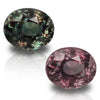 Alexandrite
Alexandrite Amethyst
Amethyst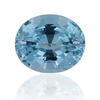 Aquamarine
Aquamarine Chrysoberyl
Chrysoberyl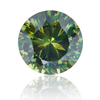 Demantoid
Demantoid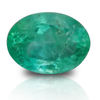 Emerald
Emerald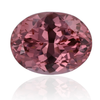 Garnet
Garnet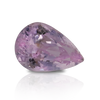 Kunzite
Kunzite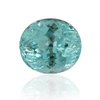 Paraiba
Paraiba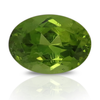 Peridot
Peridot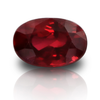 Ruby
Ruby Sapphire
Sapphire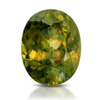 Sphene
Sphene Spinel
Spinel Tanzanite
Tanzanite Topaz
Topaz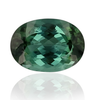 Tourmaline
Tourmaline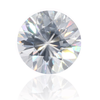 Zircon
Zircon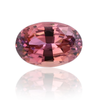 Zoisite
Zoisite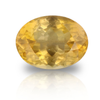 Rare Gemstones
Rare Gemstones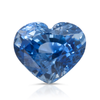 Heart Shape
Heart Shape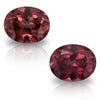 Matched Duo
Matched Duo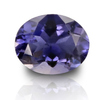 Everyday Candy
Everyday Candy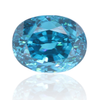 Insta Therapy
Insta Therapy Mini-Splurge
Mini-Splurge




